This week in Women in the Mountains, we sat down with pro-skier and snowmobiler Amy David. David is part of Polaris’ new Women’s Council, which aims to increase female participation in powersports. Hillary Maybery photo.
What does a big mountain pro-skier, stunt double, rodeo champion, and Sturgis Motorcycle Hall of Famer have in common? They're all part of Polaris' new Empowersports Women's Riding Council. The brand just launched this new committee with hopes of expanding and diversifying the powersports industry. If you were to ask any of the 12 councilmembers about female representation in their sport they'll likely express the same sentiment: there aren't many women in powersports. Polaris believes that finding solutions should be a team effort, which is why they brought these incredible women together. They hope that these outdoor leaders and adventurers can lean on each other to break down barriers and ideate bold initiatives. Some of the topics they'll explore in regular meetings include increasing diverse female representation, vehicle and gear considerations, safety practices, combating biases, and demystifying the sport for women.
The council will unite 12 phenomenal female riders whose voices will drive increased participation, inclusion and representation in the world of powersports. Polaris photo.
Professional skier and snowmobiler Amy David is one of the 12 women on the new council. As an athlete who's been outspoken about female representation in snowsports, she couldn't be more excited to be collaborating alongside a team of like-minded women. We sat down with David to hear more about the council and how she wants to make sledding feel less intimidating.
RELATED: 'Heroes' is the Women's Snowboarding Book We've Been Waiting For
How did your involvement in the women's council come about?
Amy David: About three years ago, I applied to be an ambassador for Polaris, and my relationship with the brand started then. As an ambassador, we're required to do two community events each month, which I think is a refreshing expectation. Many of my sponsors ask me to tag them on social media, so I thought it was cool that Polaris wanted to challenge their athletes to be engaged with the community and be out there mentoring and getting more people involved with the sport.
Each year we're asked to give feedback on the program, and I'm always pushing them to increase women's presence in media. I've also been trying to plan and organize some women's snowmobile events and clinics. Last season I was supposed to lead some women's winter backcountry retreats, but with COVID, those got canceled.
Since I'm already so passionate about this subject, it seemed natural to be part of the council. The two snowmobile representatives are Julie-Anne Chapman and me. She's an incredible athlete and founded She Shreds Mountain Adventures. We're the only two snow athletes, and the rest of the team is a cool variety of women.
I was impressed by the variety of women they have on the council. It seems like they recruited all kinds of athletes and professional riders, wouldn't you say?
AD: They did an excellent job of finding a cool mix of women.
On the two-wheeled side of things they recruited: the Litas founder Gevin Fax, racer and Sturgis Hall of Famer Jody Perewitz, International Female Ride Day founder Vicki Gray, Women’s National Motocross champion Jolene Van Vugt, Black Girls Ride founder Porsche Taylor, Wild Gypsy Tour creator Kelly Yazdi, and dirt bike racer Carrie Barton. For the side by side drivers they pulled Michelle Barraza, Kristen Matlock, and brand ambassador Lisa Lockhart. Lastly, Julie-Ann Chapman and I are at the helm for snowmobiling.
Geronimo! Whether she’s on her skis or sled, David has never been one to shy away from a good cliff huck. Isabelle La Motte photo.
Now that you're part of this community, do you see yourself collaborating with a dirt athlete?
AD: I would love to. I must admit I've never dirt biked before, but I've always wanted to. That's next on the list. I think it would be cool to make a trade where I teach the dirt ambassadors how to snowmobile in exchange for dirt bike lessons. I'm excited to meet all the women on this list because it could lead me to try new things and sports.
Do you think snowmobiling lacks a women's community?
AD: I think it's been growing a lot. I've seen women's group rides becoming more of a thing. But one thing that I've found challenged by—which could be the case here in the Sawtooths—but I'm often the only girl in my riding groups. It's often challenging for me to find other women to go out and ride with. It becomes even harder to find women who also want to ride and backcountry ski. I think having something like the women's council will improve how we get women into the sport, and hopefully, make it feel more inviting.
For example, smaller riders are intimidated by the idea of handling a machine like a snowmobile. Once you learn the technique and finesse, I think it's more of a dance with the machine rather than trying to muscle through things. The council will brainstorm ways to get messages like that across, so women can realize that these sports are accessible for them. In my opinion, the most effective way to include more women is a blend of thoughtful marketing and community outreach.
For David, Sledding opened the door to all kinds of incredible terrain. Jeremy Lato photo.
What are some ideas you have to address this?
AD: I think there's a big misconception among women that they need to be jacked to be part of powersports. That's not true. What excites me about the women's council is that we can share our experiences from the field and tell a different story. Let's say you only go riding with your macho guy friends; of course, it would convince you to believe that their method is the only way to go about things.
For example, I try to focus on using my legs to get the sled unstuck because that's the strongest part of my body. I also try to use physics and try to find ways to utilize my bones instead of my muscles. If you don't have a female mentor or friend to teach you those things, you'd likely never learn these tips. I'd love to put together a video series to help outline some of these techniques for women, and I hope I can make that happen with the council's support.
On top of being an athlete, you've done a fair amount of producing content. Do you see yourself doing something similar with Polaris?
AD: I'd love to do some content with Polaris that is focused on bringing some new people into the sport. One vision I have is getting a skier and snowmobiler ride the same kinds of lines. Dane Tudor and Brodie Evans did something similar, and it was cool to see snowmobiling and backcountry skiing have more of a community with each other.
Sleds seem like such a versatile tool for a backcountry skier wanting to go even further. With that in mind, I'm curious how snowmobiling could elevate women's snowsports.
AD: It's empowering. If you get your own snowmobile and you're a skier, you can just strap your skis on the back. You don't need a pilot. You don't need to pay for a helicopter and the logistics. There's a lot of independence that comes from it. What I think is exciting is as you improve, you can ride the sled like how you ski. You're doing powder turns up, down, sideways. It's not just riding on a flat trail.
And especially for a dedicated backcountry skier, sleds change the way you access the mountains. Here in the Sawtooths, you'd have to skin 10 miles on the flat ground before you can even access some of the bigger backcountry lines. Here, the snowmobile enables you to cover ground much faster or session a slope multiple times. It's certainly helped me move my ski career farther. It's also helped me learn more about land use and the wilderness boundary lines.
When did you start sledding, and why did that appeal to you?
AD: The first time I rode a snowmobile, I was two years old. My parents used to manage a dude range in Jackson Hole, and it was only sled access in the winter. I was also exposed to it by my grandpa Melvin, who homesteaded in the Wyoming Range near Pinedale. He had a dude ranch, which had some of the very first snowmobiles ever. It used to snow so much that they had to shovel tunnels out of the house. As a kid, my family would go to the ranch, and he would hook up these plastic sleds up to his snowmobile, and he'd tow us to the nearby sledding hill. I remember that you didn't want to fall off cause grandpa was a hard ass and wasn't going to turn around. You learned to hold on for dear life.
My grandpa regularly hosted the Polaris engineers at his ranch, and one of my other family members Gary Neely owned the snowmobile shop Bucky's in Pinedale. He had a knack for engineering and helped design Polaris’ Rocky Mountain King snowmobile, which was the first off-trail mountain sled. The story goes that Gary brought all the Polaris engineers out to my grandfather's ranch, and they couldn't get their sleds to work in the four-feet of fresh snow. But Gary's sled—the one he re-engineered—was the only one who could ride through the deep snow. Over two weeks, he helped them develop the first deep powder sled.
Once I moved to Idaho, I really wanted to get one because the backcountry skiing is pretty remote. When I got into snowmobiling, I spent a lot of time riding with Gary. He's taught me a lot about technique and my family history. It wasn't until riding with him that I learned how involved my family was with the snowmobiling industry.
David hopes that the women’s council can help change the intimidating perception of powersports. Hilary Maybery photo.
It's wild that snowmobiling is so intertwined with your family's history.
AD: Yeah, there's this story about my great-grandma Ethel and great aunt Mary that I love. She lived out on that ranch in the Wyoming range and would deliver mail for the community. She would transport the mail with this horse and sleigh in the middle of winter, crossing miles of open fields. She'd do it during blizzards even. She claimed that the horses knew the route so well that she could hide in the hay while it snowed, and the horses would trot along. But when one of the first snowmobiles came out, my great uncle got it because he thought it would make things more efficient for her. Apparently, it never left the shed because she didn't trust it.
My great aunt Mary, however, saw the sled and was intrigued. Funny enough, she was the first person who took the sled out for joyrides. Whenever I get frustrated with snowmobiling or struggle with it, I think of great aunt Mary. For me, it took a lot of determination to figure out how to ride it. Once you're out there in the backcountry, no one else is going to drive you out. So whenever I'm having a hard time, I'll think of the many tough women in my family.
Do you have any useful tips for someone wanting to learn?
AD: Never give up. Expect to be challenged and frustrated, but know to work smarter, not harder. Women will have a higher success rate with snowmobiling if they focus on skill and technique rather than muscle through it.
I think girls have the advantage that they can't rely on brute strength, so it forces you to learn finesse. I highly recommend finding a mentor so you have someone to reach out to for advice. Even better is if you can go out with someone for a few days in the early season and practice different techniques.
If you're financially able, I'd recommend buying a newer sled. The newer sleds are built better, and engineering has improved over the years. For me, buying a new one brought me a greater sense of security. I don't want my sled to break down while I'm far out in the backcountry.
Lastly, pro tip for backcountry skiers: don't snowmobile in your ski boots. It'll make the process so much easier if you wear regular winter boots. One of my favorite brands, Mo Pros, has these awesome snowmobile ski racks and boot bags that keep your ski boots warm until you need them. Nothing sucks more than trying to shove your foot into frozen plastic.



__video_thumb.jpg)
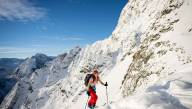
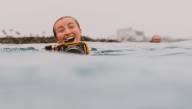
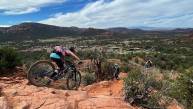

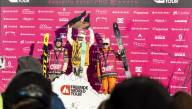
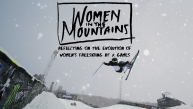
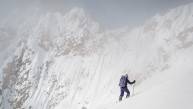

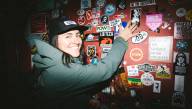
__video_thumb.jpg)
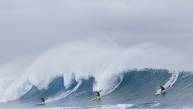
__video_thumb.jpeg)


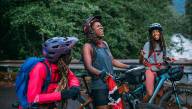



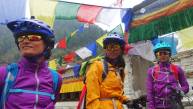
Ajay Singh
November 3rd, 2020
https://somamedicare.com/
mbebef
November 23rd, 2020
The invisibilisation of women’s work ignores much of the work done by women. It is noticed with pleasure that nowadays that thought of our society starts changing. Women in this century are no more dependent. They are in every sector of the world. bmw auto repair
sona khan
February 2nd, 2021
grate post
https://calendardream.com/
https://calendardream.com/yearly-calendar/
https://calendardream.com/april-calendar/
https://calendardream.com/march-calendar/
https://calendardream.com/may-2020-calendar/
https://calendardream.com/june-calendar/
https://calendardream.com/canada-calendar/
https://calendardream.com/one-page-calendar/
https://calendardream.com/indonesia-calendar/
https://calendardream.com/singapore-calendar/
https://calendardream.com/malaysia-calendar/
https://calendardream.com/sri-lanka-calendar/
https://calendardream.com/usa-calendar/
https://calendardream.com/japan-calendar/
https://calendardream.com/turkish-calendar/
https://calendardream.com/french-calendar/
https://calendardream.com/russia-calendar/